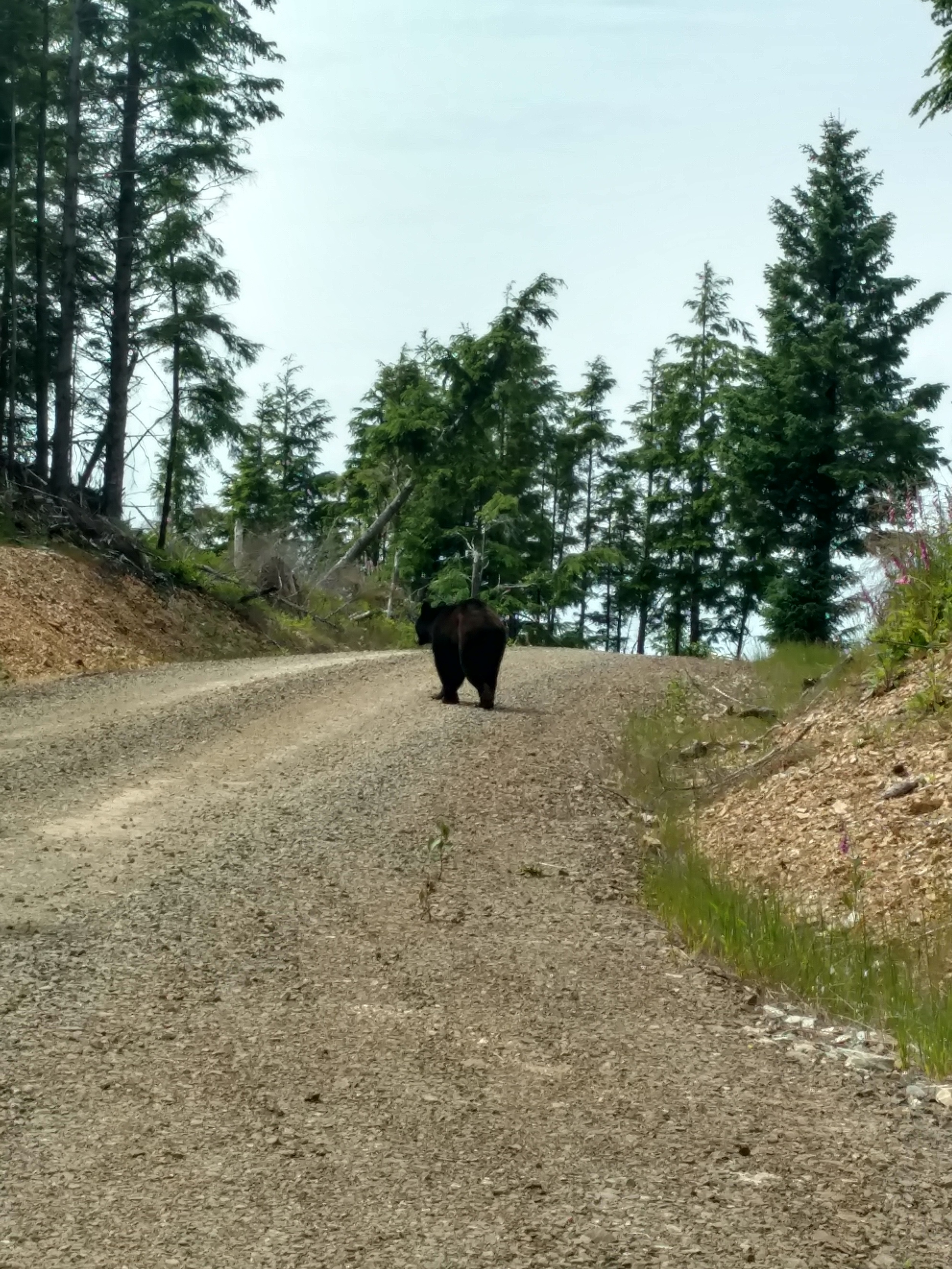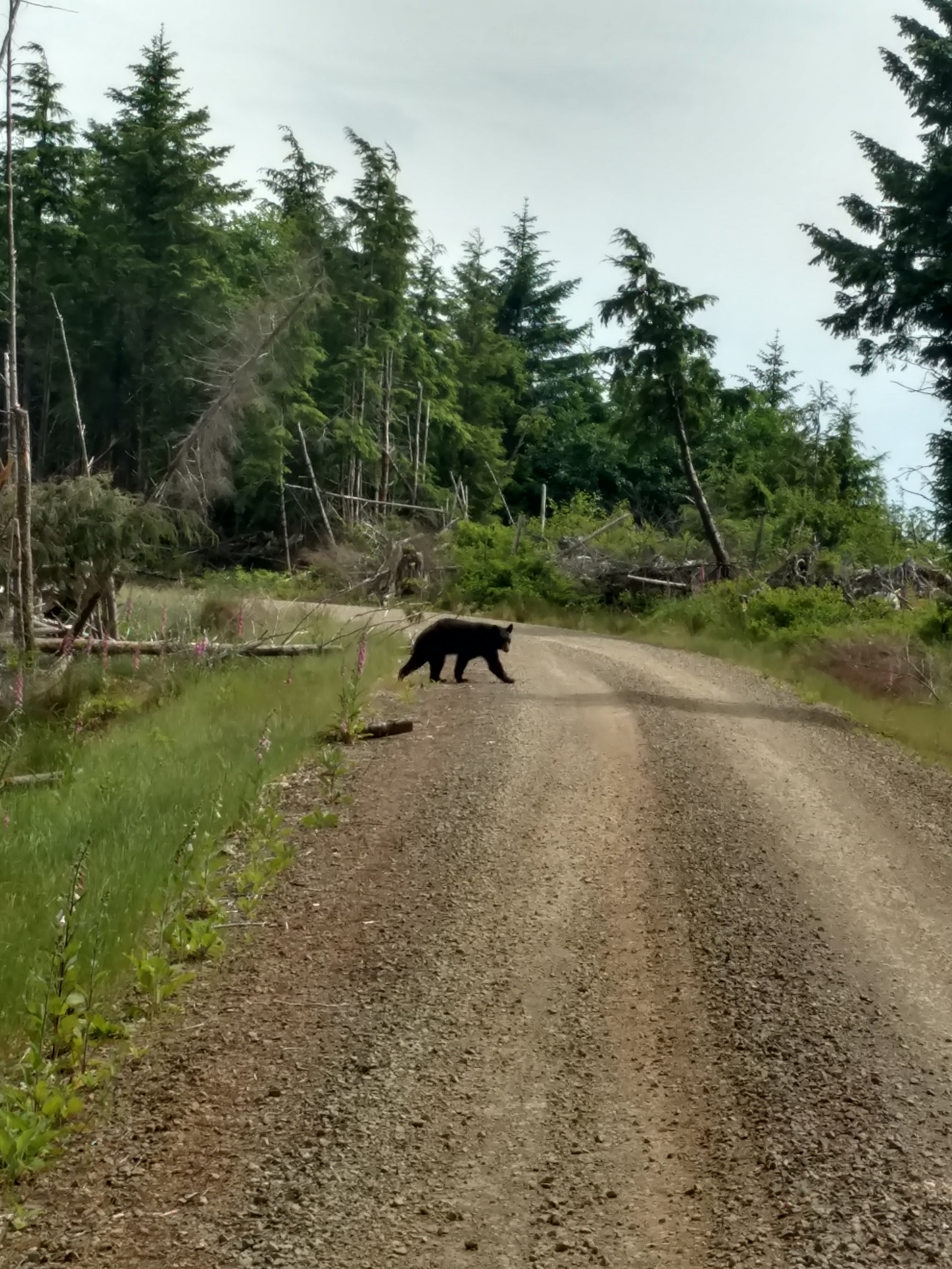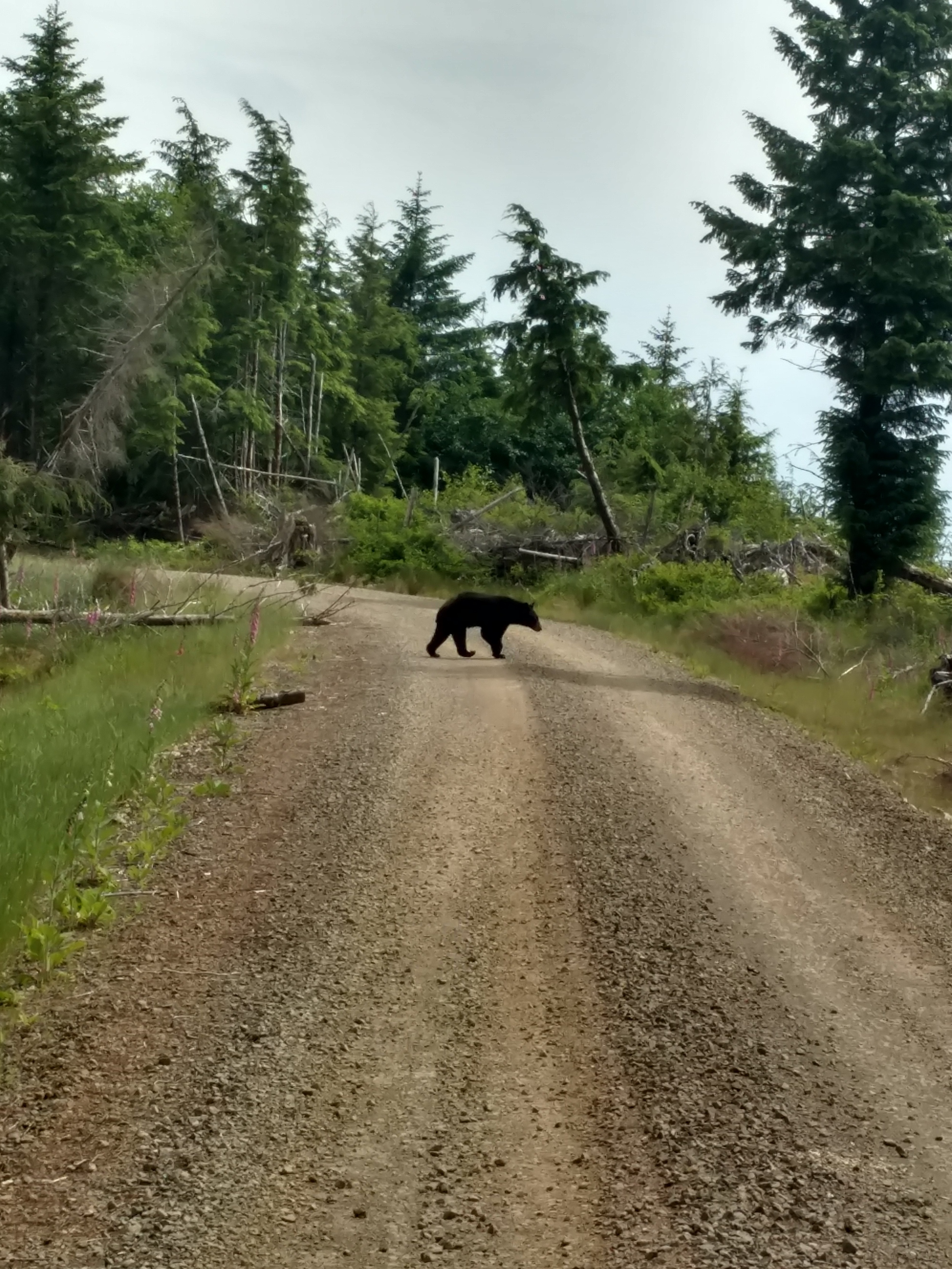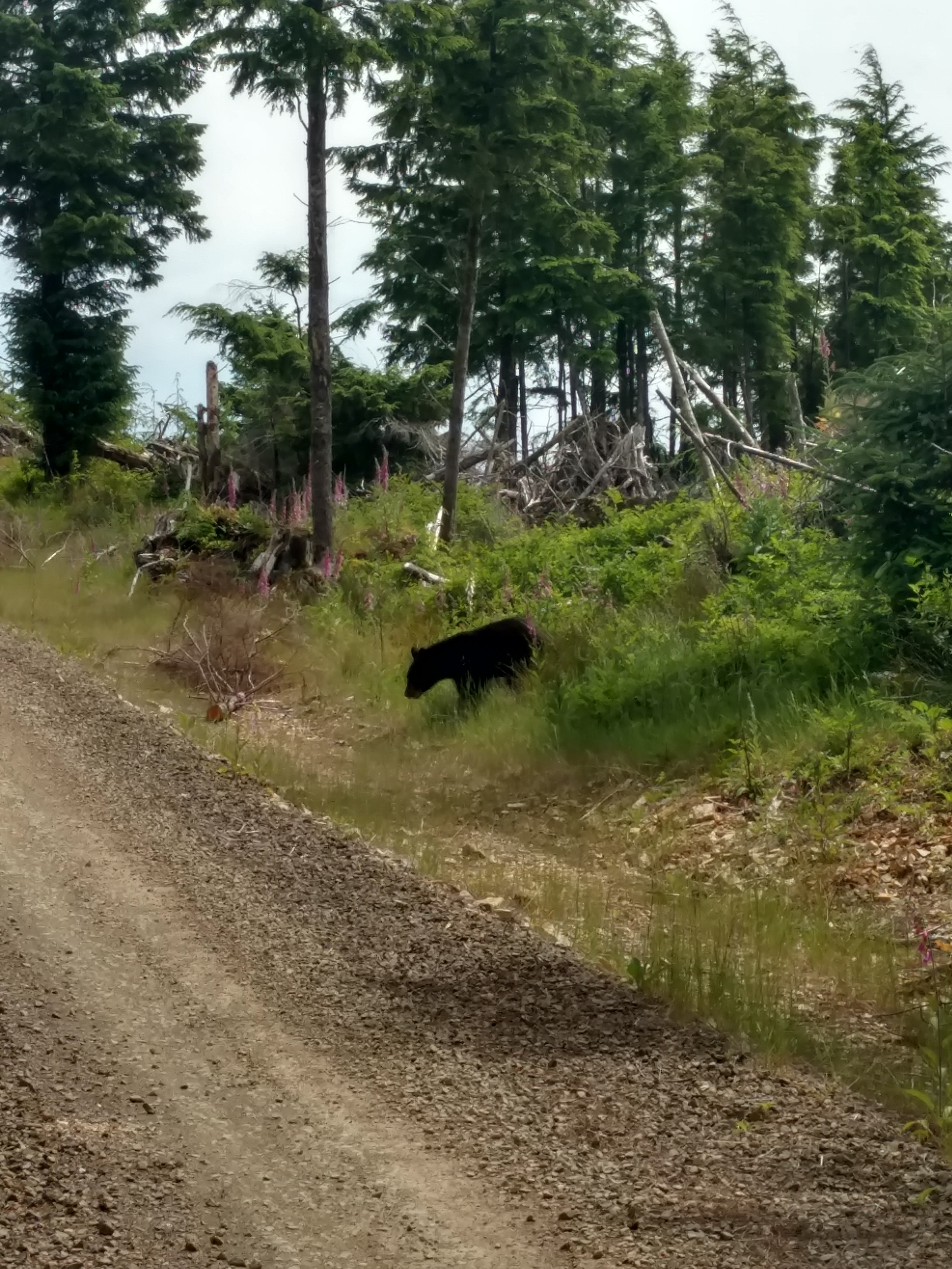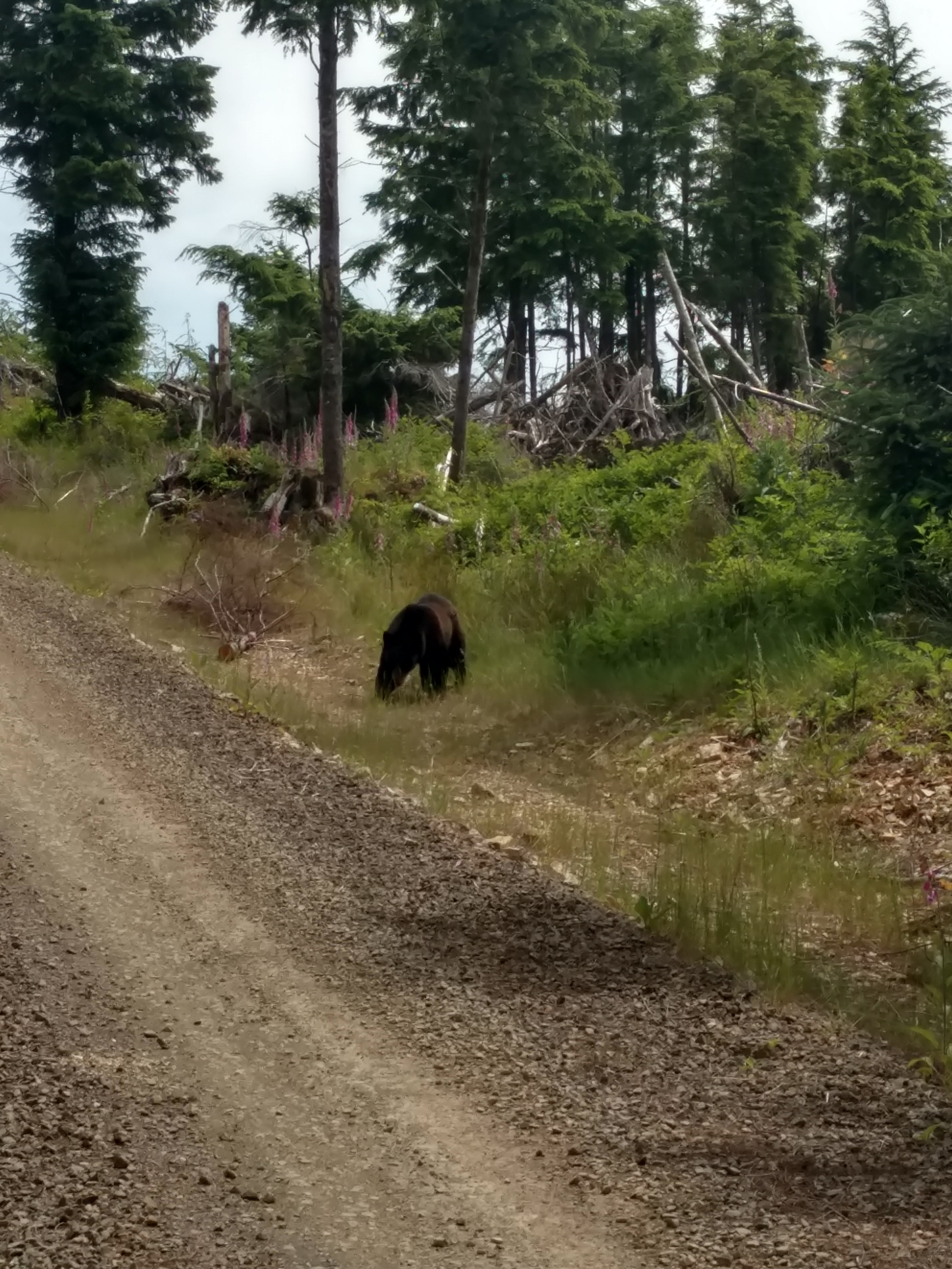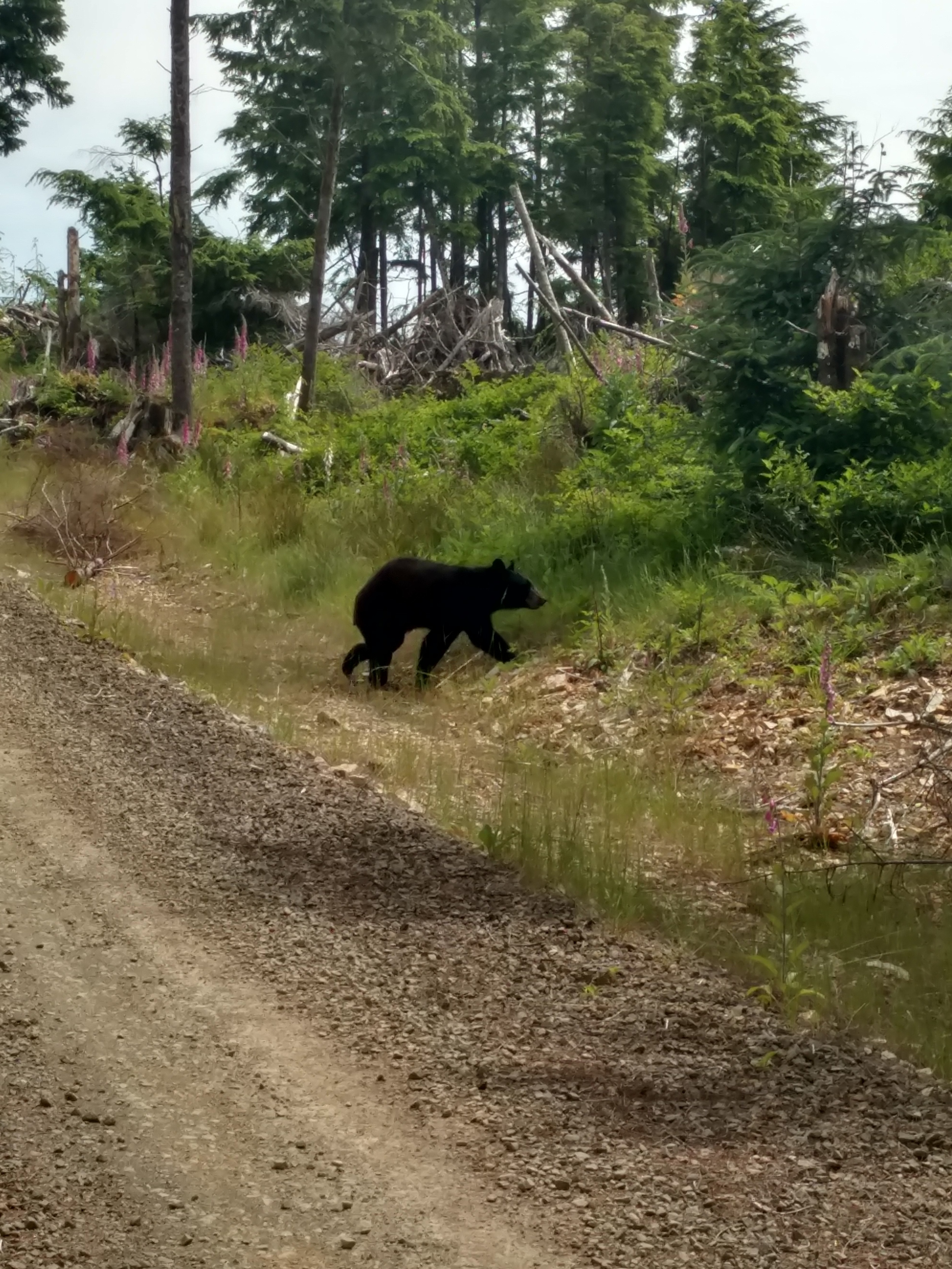Written & Photographed by Kyle Smith, Field Forester
Late Spring at The Nature Conservancy’s Ellsworth Creek Preserve in Southwest Washington is a magical place for wildlife viewing. Spring rains bring out amphibians in huge numbers such as the tailed frog, ruffed skinned newts, Columbia torrent salamander, pacific giant salamander. In fact, a survey conducted by the Washington Natural Heritage Program and TNC scientists found that Ellsworth Creek had on of the highest populations of amphibians in Washington State. Amphibians aren’t the only things that roam the misty forest floors in Ellsworth Creek.
Black bears come out of their winter torpor to forage on grasses, berries and the fresh sapwood of actively growing trees. Southwest Washington and in particular Ellsworth Creek have some of the largest numbers of black bears in the lower 48. We were lucky to come across these beautiful black bears at the preserve recently!
The huge old growth forests of Ellsworth Creek offer excellent denning sites and the productive soils and over eight feet of annual prescription grow huge thickets of huckleberries, salmon berries and salal berries that bears plump up on all summer long. High among the forested trees tops a small robin sized bird called the marbled murrelet flies in at over 60 mph to nest up in the old growth canopy with in the Ellsworth Creek. These small robin sized birds rare birds spend most of their life at sea but in late spring and early summer they can be seen flying in over Ellsworth Creek to use the large old growth tree branches to nest and raise their young before returning to the sea in late summer. Just off to the west looking down on to Willapa Bay, tens of thousands of dunlins and sandpipers swarm to Willapa Bays pristine waters to feed upon invertebrates with in the mudflats of the Bay.






